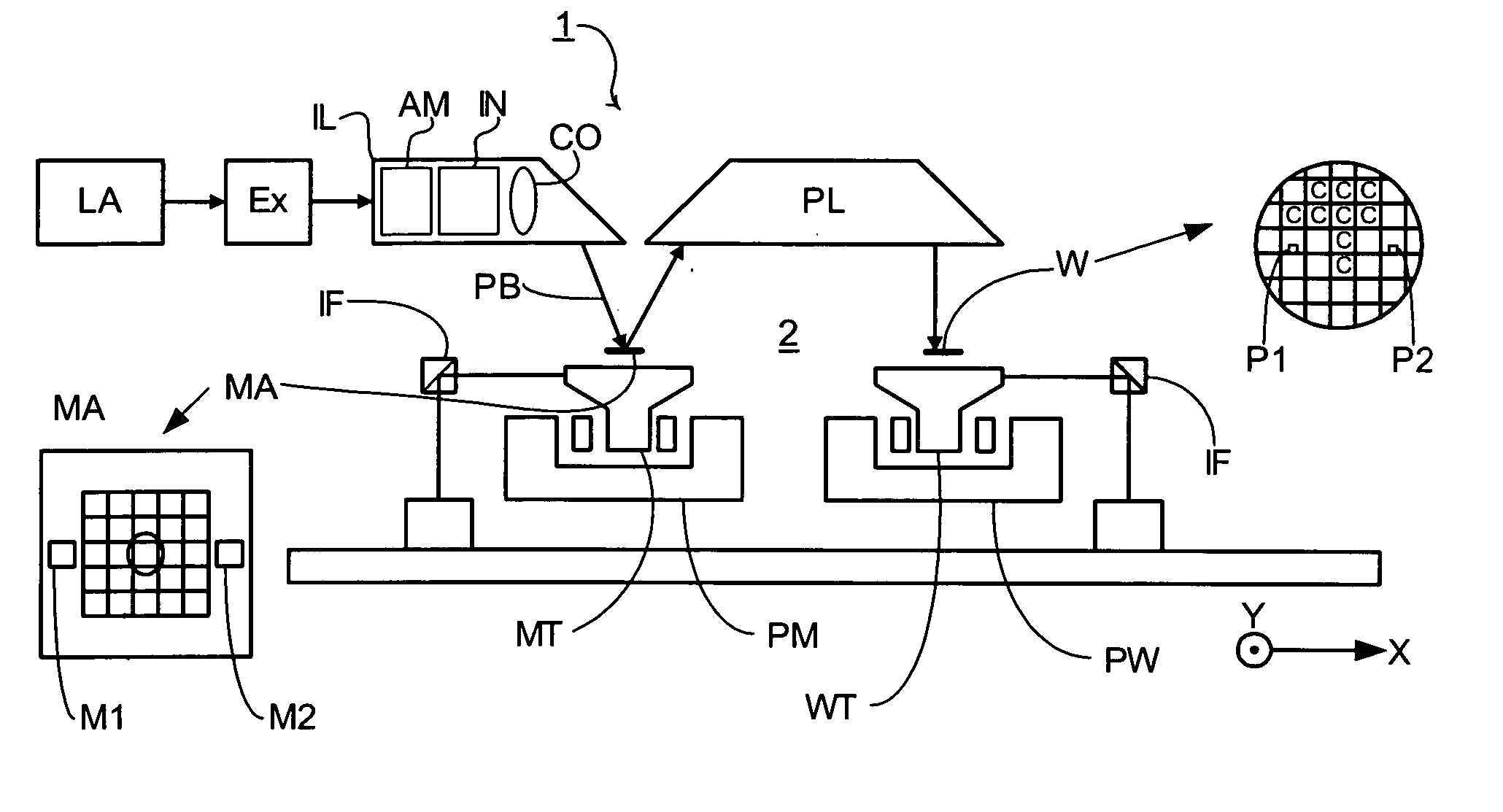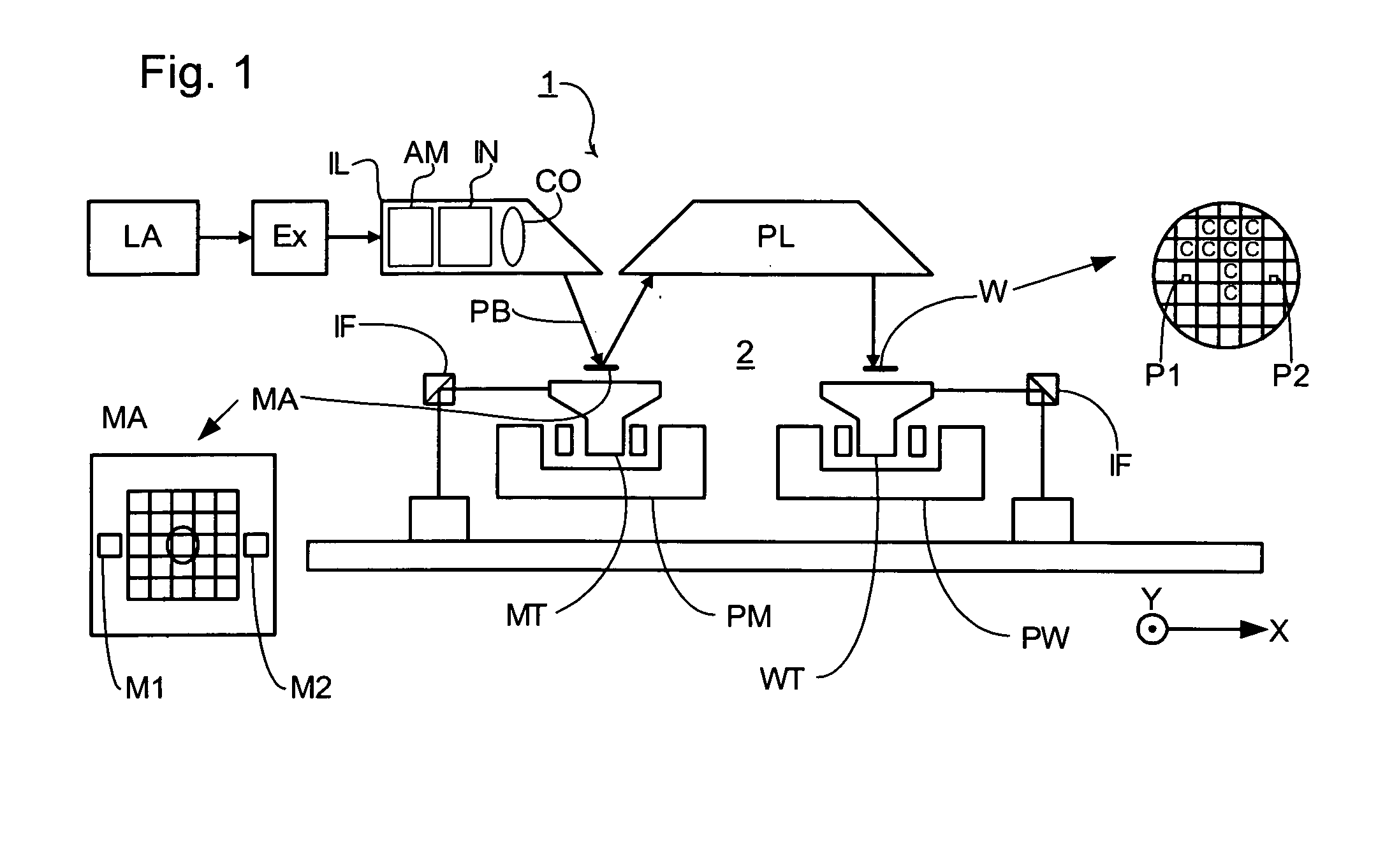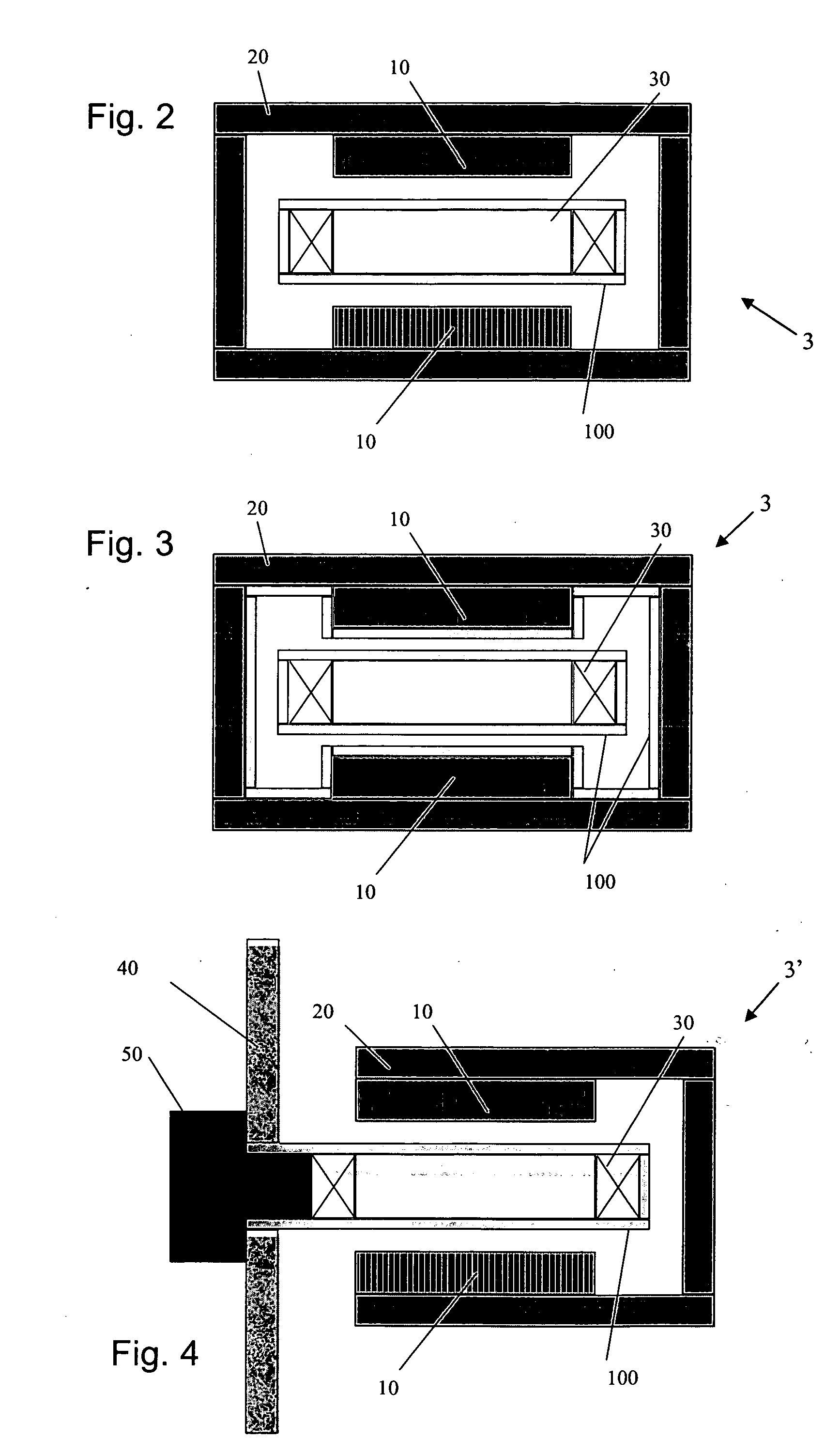Method of preparing components, prepared component, lithographic apparatus and device manufacturing method
a technology of lithographic apparatus and device manufacturing, which is applied in the direction of printers, instruments, photographic processes, etc., can solve the problems of large amount of outgasing and reduce the efficiency of nearby actuators, and achieve the effect of reducing the problems associated
- Summary
- Abstract
- Description
- Claims
- Application Information
AI Technical Summary
Benefits of technology
Problems solved by technology
Method used
Image
Examples
examples
[0073] FIGS. 2 to 13 show various examples of the invention applied to components used in an actuator system.
[0074]FIGS. 2 and 3 show an enclosed actuator system 3 in which the central component comprising the coil 30 moves with respect to the yoke 20 in a direction perpendicular to the plane of the drawing. The inner chamber is held in a vacuum and, to reduce outgassing, the coil 30 can be coated with a coating 100 as described above (see FIGS. 2 and 3). The coil 30 in each of these examples is typically glued to its support component using an epoxy-based resin and for this reason, coatings that can be applied and treated using low temperature steps (e.g. less than 200° C.) are preferred. The internal parts of the yoke 20 and magnet 10 can also be coated, as shown in FIG. 3.
[0075] A second type of actuator 3′ is shown in FIGS. 4 to 6. Here, the central component is fixed to a chamber wall 40 and the yoke component 20 moves around it in a direction perpendicular to the plane of th...
PUM
 Login to View More
Login to View More Abstract
Description
Claims
Application Information
 Login to View More
Login to View More - R&D
- Intellectual Property
- Life Sciences
- Materials
- Tech Scout
- Unparalleled Data Quality
- Higher Quality Content
- 60% Fewer Hallucinations
Browse by: Latest US Patents, China's latest patents, Technical Efficacy Thesaurus, Application Domain, Technology Topic, Popular Technical Reports.
© 2025 PatSnap. All rights reserved.Legal|Privacy policy|Modern Slavery Act Transparency Statement|Sitemap|About US| Contact US: help@patsnap.com



